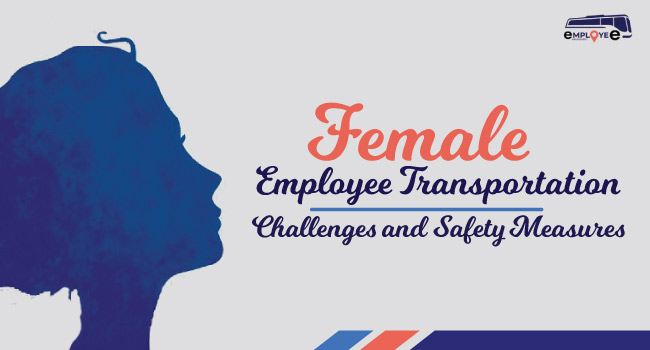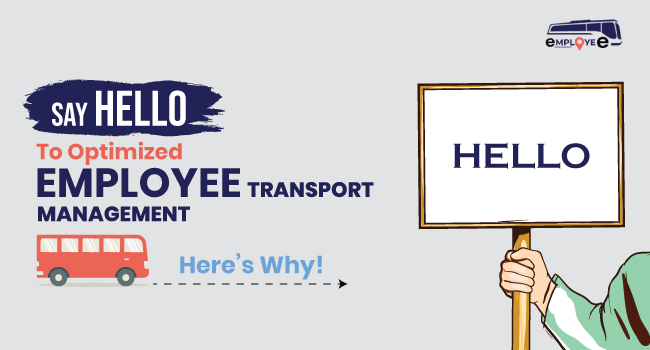Female employee transportation takes center-stage in the Corporate sector where transportation to and from work is extended as a perk to the employee. Employee productivity is directly proportional to their well-being.
With shifts and odd operational hours, commuting to work for female employees, is a major concern. It is the onus of the employer to ensure the safety of female employees. Safety measures are to be adopted by the employer to meet the challenges involved in female employee transportation.
Challenges
Worldwide, women using public transport feel unsafe and insecure. Public transport is used more by women than men. They are prone to harassment and assault on public buses and trains. It is only a very small fraction of women who have not experienced an uncomfortable situation while travelling alone.
Though they do feel comparatively safe in public buses and trains during daylight hours, they undergo physical, sexual or verbal harassment in some form or the other.
Harassment faced while walking to a station, standing at a crowded bus-stop during peak hours or while rushing home before dark are some of the common fears that women are faced with.
It is highly essential to ensure the safety and security of women by the government as well as the employers as most of the untoward instances take place while women commute to work and back. The women hence avoid public transport and resort to taking cabs and ride-hires or personal transport if possible.
- Transportation of employees is the major operation for the fleet management of a company. The transportation of female employees is even more of a challenge as their safety and security are of prime importance.
- Increasing the wellbeing of female employees will increase productivity in the workplace. With globalization, the shift in working hours demands that the female employees work odd hours between 7 pm and 6 am and it shifts through the days This makes it difficult and unsafe for the employee to commute to work. Hence the least the employer can do is to assure the female employees of a safe commute to work.
- Female only buses and train compartments have to an extent solved the problems of travel for women. This has been tried out in Brazil and India. This sort of an exclusive operation, though lauded by the users, might not turn profitable for the government or transport authorities.

- Increasing the hiring of female drivers to pick up and drop off is another option. But the female drivers might not be able to commit themselves to long hours of work or night runs due to constraints of family and their safety.
- On-demand bus stops closer to home can be created for travelers by public buses. This will not be possible for travelers by trains. In either case, the last leg of the journey home from the bus stop or train station is still hazardous at odd hours of the day.
- The cost will be a guiding factor for any organization providing transport for the employees. The transport policy has to be reviewed periodically to maintain viable operations. Different models of costing like the company bearing the entire cost or the employee contributing a part of the cost can be worked out. These options again depend on the perks and packages given to the employees.
- Operating an entire fleet of buses, coaches or cabs may not prove to be cost-effective for certain industries. The employees can be given the freedom to use public transport, share cabs, car-pools, etc, the charges of which can be reimbursed by the company. In this case, the safety of travel cannot be ensured. Companies outsource their transport needs. This again means higher costs, minimal control and lesser security.
- Though sexual harassment happens quite often, the victims do not report the incident for fear of being blamed for the incident. The pressure on the victims to prove their innocence and lack of knowledge of legal recourse available to them silence them. Without proper reporting, quick remedial measures cannot be affected. Hence the women should be encouraged to speak without inhibition so that travel could be made safe for the whole female community.
Safety Measures
- The employers have gone to great lengths to ensure that the employee arrives safely and comfortably to work and back. The companies should have well-defined policies and a dedicated team to handle the transport of employees. There are several passenger safety apps that can be used by the transport department.
- In today’s scenario, a multitude of tracking apps is available. The apps will enable the transport team to optimize costs and resources. The automated control and reporting systems will enhance the operations. The organization can choose an app suited to their requirements and the employee needs.
- GPS devices can be fixed in all vehicles to enable live tracking of vehicle movement. The presence of police or person of authority on a bus is recommended. Video cameras installed in the buses will record the happenings on the bus and will help to deter assaults if any.
- Female-only cabs, fixed with GPD devices, can be tracked and monitored separately. Any deviation in the route can be detected and suitable action is taken immediately.

- Panic buttons fixed in the vehicles can be used to alert the transport desk in case of an emergency. The desk then can inform the security and the police for immediate action.
- Fleet management has to make sure that the female employees are always accompanied by a male colleague and not left alone with a driver during trips at night. The route plan should ensure that the female employees are not the first to be picked up or last to be dropped off. In unavoidable cases where it is necessitated the employee should be escorted by a guard.
- The female employee should be able to contact the driver without having to share her telephone number. This can be done with a call masking facility. The mobile numbers of female employees have to be masked on the devices used by drivers.
- The female employee should be able to send a confirmation of the safe-drop on reaching her destination via the app to the transport desk.
- The drivers of the vehicles, owned or hired by the companies, should go through an extensive process of background checks before being absorbed into the system. They should be trained on aspects of courtesy, etiquette and usage of technology.
- The companies have to work out a transport model that is cost-effective and at the same time does not compromise on safety and security. Depending on the size and nature of business they can decide on the mode of transport – buses and coaches during the day and cabs by night – to pick and drop female employees.
- Random checks on drivers should be performed by the transport team to avoid drunken driving, fatigue, and tiredness, over-speeding and traffic offenses to ensure driver discipline.
- Awareness programs for the female commuters to familiarize them with the reporting systems and the legal recourse available to them would be highly beneficial. This would encourage them to voice their concerns and report specific incidents.
- A regular feedback mechanism from the passengers will help the transport team in their evaluation of the drivers. It will aid them in upgrading their services.
Talented and professional women refrain from taking up employment due to harassment while commuting to the workplace and back. Companies should not overlook this fact and they should strive to tap this extensive pool of talent.
Safe transport to and from work will be an added incentive for a female employee to join an organization.
Conclusion
With the technology innovations and extensive background verification processes in place, the organization can provide the employee with all the support required. Even then it is practically impossible to guarantee cent percent safety.
In the end, it is the female employee who is responsible for her safety. Being aware and mindful of the circumstances and maintaining a level of alertness are prime requisites to one’s own safety.



